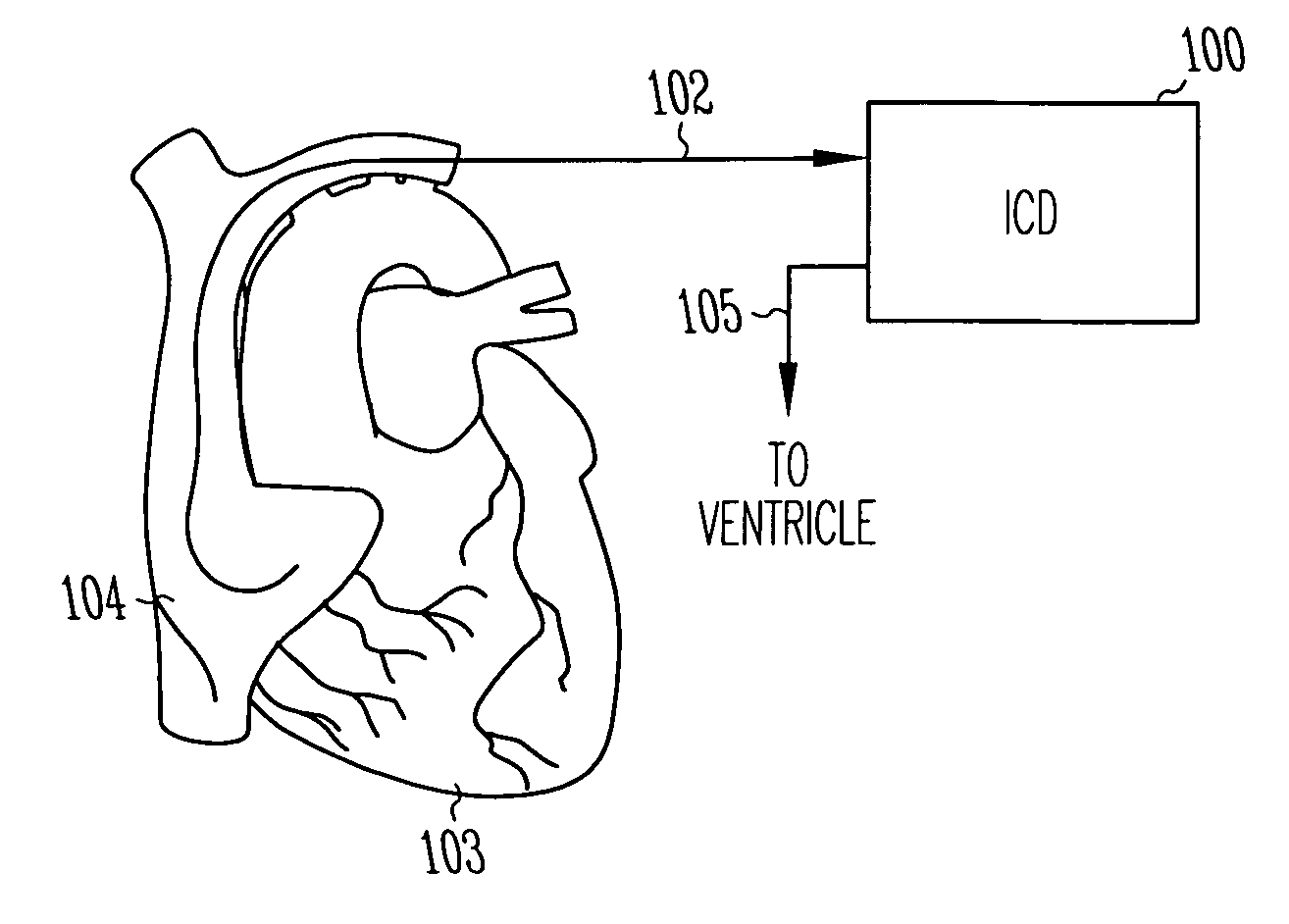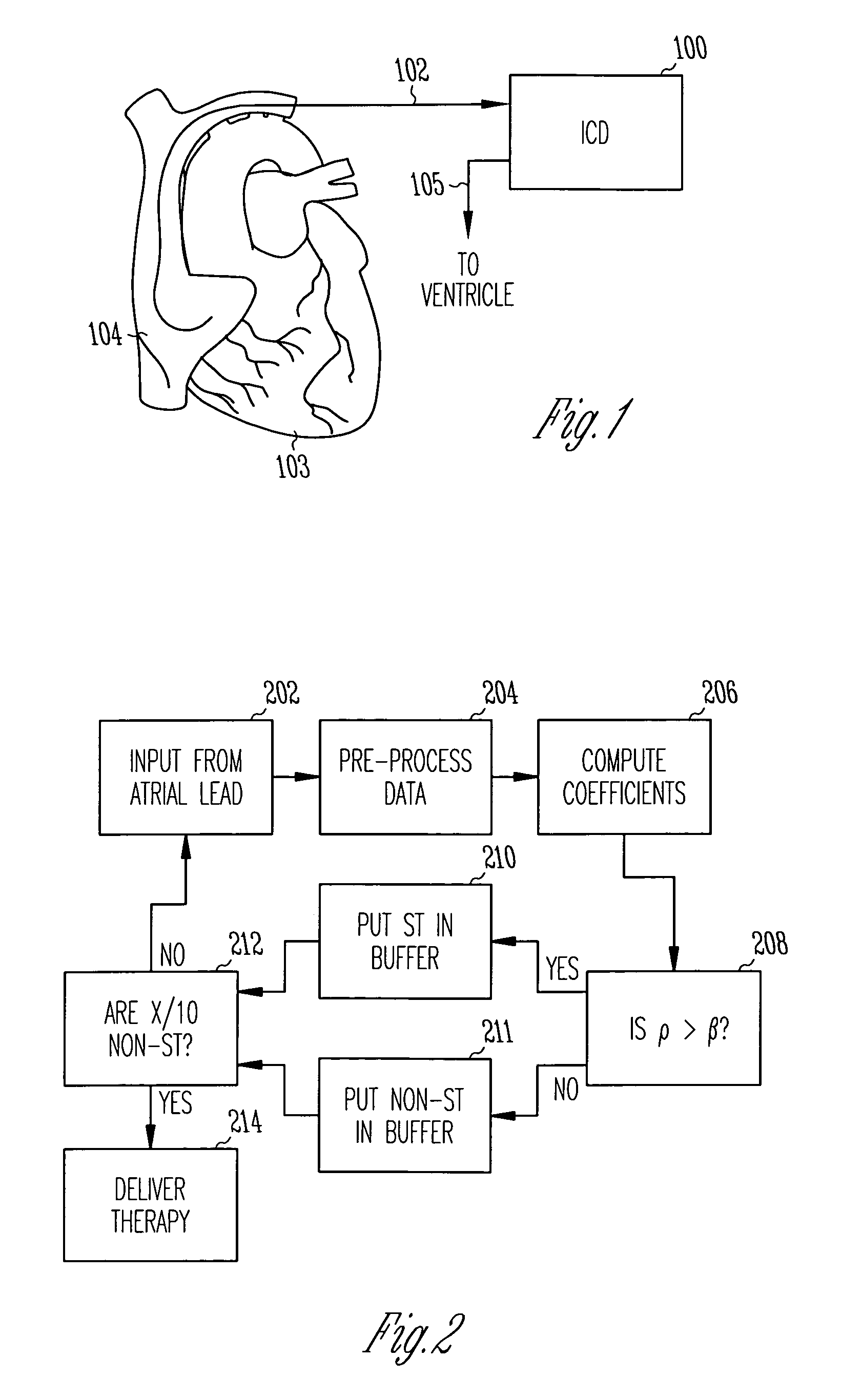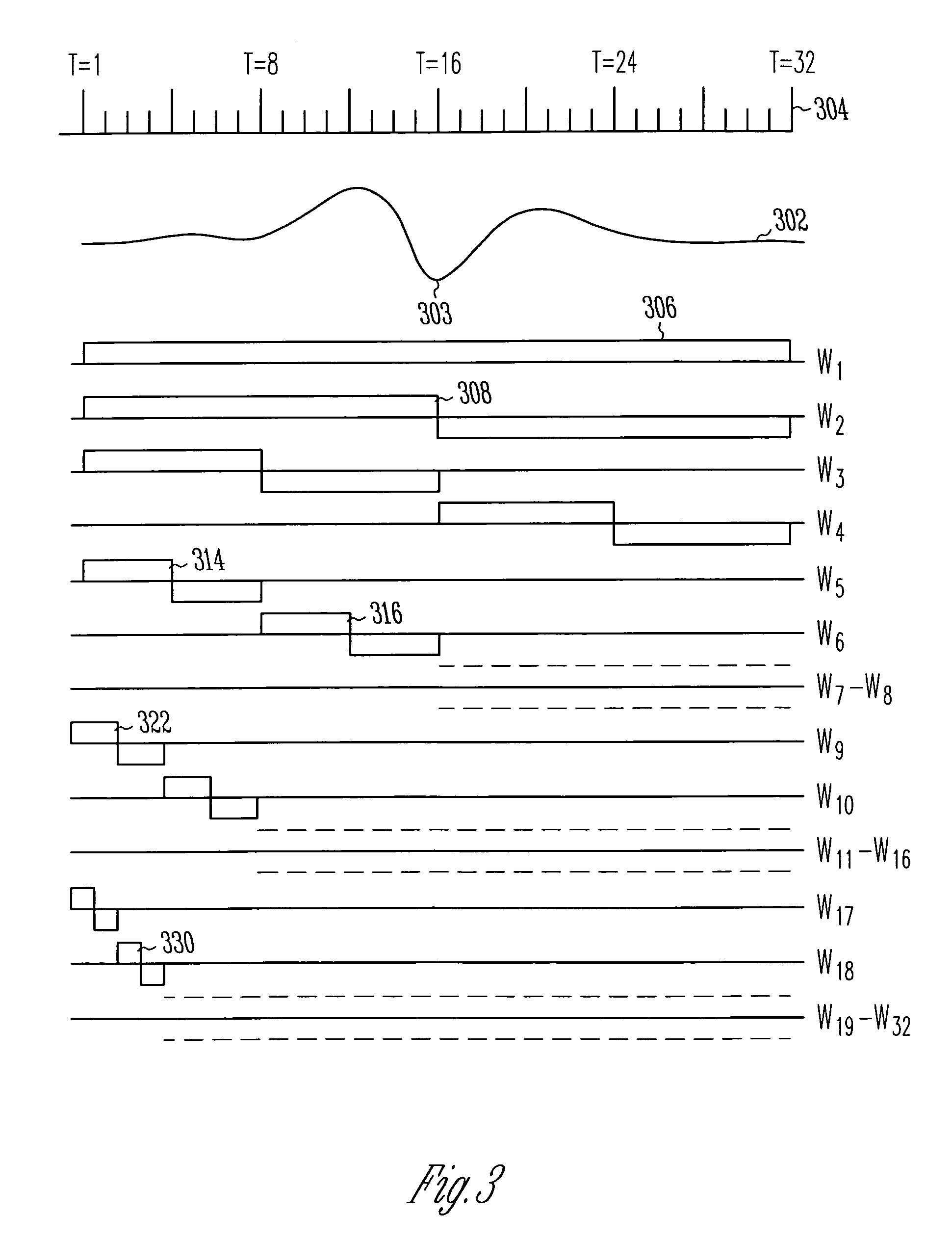Distinguishing sinus tachycardia from atrial fibrillation and atrial flutter through analysis of atrial channel wavelet transforms
a technology atrial fibrillation, which is applied in the field of atrial channel wavelet transform analysis of atrial channel wavelet transform, dual chamber icds, can solve the problems of high computational intensity of cwa, excessive computation of atrial fibrillation, and inability to distinguish between the conditions of atrial fibrillation and atrial flutter, etc., and achieve low variability
- Summary
- Abstract
- Description
- Claims
- Application Information
AI Technical Summary
Benefits of technology
Problems solved by technology
Method used
Image
Examples
Embodiment Construction
[0022]The present invention is directed towards improving the quality and functionality of both implantable cardioverter defibrillators (ICDs) and implantable atrial defibrillators (IADs). All such devices need to have a method and mechanism for accurately distinguishing sinus tachycardia (ST) form non-ST, such as atrial fibrillation and atrial flutter. This method and mechanism should be conservative, biased towards not initiating therapy unless non-ST is clearly indicated. It should also require as few machine computational cycles as possible to reduce ICD and IAD battery drain.
[0023]The principle underlying the present invention is that ST and non-ST can be distinguished by studying and measuring the atrial electrogram morphology to detect aberrant conduction in the atria. Thus, by comparing normal ST waveforms to a series of newly-occurring waveforms, ST is indicated by abnormal atrial waveform morphology which signals aberrant conduction within the atria—improper electrical pat...
PUM
 Login to View More
Login to View More Abstract
Description
Claims
Application Information
 Login to View More
Login to View More - R&D
- Intellectual Property
- Life Sciences
- Materials
- Tech Scout
- Unparalleled Data Quality
- Higher Quality Content
- 60% Fewer Hallucinations
Browse by: Latest US Patents, China's latest patents, Technical Efficacy Thesaurus, Application Domain, Technology Topic, Popular Technical Reports.
© 2025 PatSnap. All rights reserved.Legal|Privacy policy|Modern Slavery Act Transparency Statement|Sitemap|About US| Contact US: help@patsnap.com



